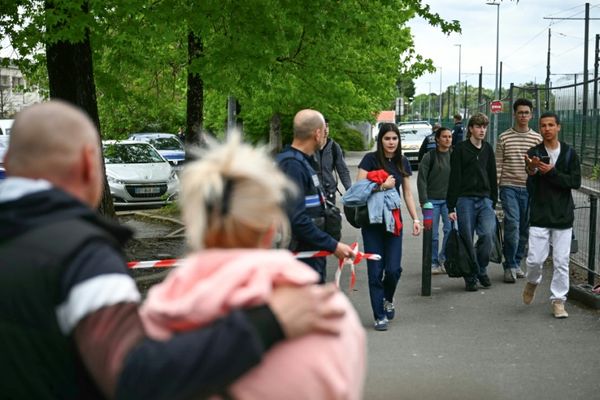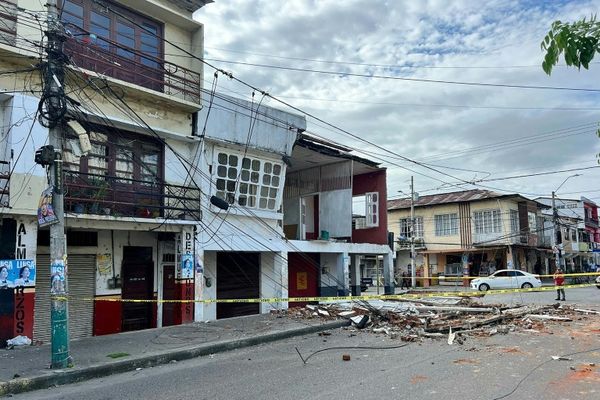Erik Karlsson had just become the sixth defenseman in NHL history to reach 100 points in a season, and Logan Couture joined Patrick Marleau, Joe Thornton, and Joe Pavelski as the only San Jose Sharks players to score 700 points with the team.
But the atmosphere inside the Sharks’ locker room after Monday’s game with the Winnipeg Jets was silent. Again.
San Jose is now 22-42-16 following its 6-2 loss to the Jets, dropping its points percentage to .375, the fourth-worst in team history and its lowest since the 1995-96 season (.287) — two years before Marleau first came to the organization.
On March 15, the Sharks, once the model of consistency, became the NHL’s first team to be officially eliminated from playoff contention with the start of the postseason still more than a month away. With their 6-1 loss to the Edmonton Oilers on Saturday, the Sharks capped a home schedule that yielded just eight wins, matching a franchise low.
All of this despite Karlsson’s historic achievement and Couture’s milestone in what’s so far been a 67-point season, his best in years.
Sharks general manager Mike Grier might be trying to lay a foundation for the future, but it’s painful for everyone involved right now.
“It’s frustrating because you want to take advantage of great players like Erik and Logan,” Sharks coach David Quinn said. “Obviously you wish that along with the individual statistics and the milestones that they’re reaching, we could be winning through the process. But unfortunately, we’re not.”
How did it get this bad?
Here’s a look at how the Sharks reached this point.
1. Hit-and-miss drafts
NHL teams have to draft well to stay competitive in the salary cap era. Over the last decade-plus, sometimes the Sharks struck gold, and other times they whiffed. Badly.
While the selections of Tomas Hertl in 2012 at No. 17 overall, and Timo Meier in 2015 at No. 9 worked out about as well as anyone could have hoped, other decisions backfired, like the ones to take defenseman Mirco Mueller 18th overall in 2013 and move back in the 2014 draft to take forward Nikolai Goldobin at No. 27.
Mueller’s development appeared to be mishandled by the organization and he only played 54 games for the Sharks before he was traded to New Jersey in June 2017. Now 28, he has been out of the NHL for three seasons. Players chosen behind him later in the first round, and who remain in the league, include forwards Andre Burakovsky, Jason Dickenson, Ryan Hartman, and defenseman Shea Theodore.
Goldobin, born in Russia, was a small, skilled winger. But his commitment to a two-way game wavered and he never fit in on the Pete DeBoer-coached Sharks by the time he became a full-time pro in North America in 2015. He only played 11 games for the Sharks over two seasons, but the most painful part of that draft was that the Sharks, in a trade with Chicago, moved from No. 20 to No. 27. Taken at No. 25 by Boston was David Pastrnak, one of the NHL’s elite goal scorers.
Mueller was the only 2013 Sharks draft pick to play in the NHL and five of the eight players the Sharks chose in 2014 never reached the league. Players taken those years are now in the primes of their careers across the NHL.
Of the 25 players the Sharks drafted from 2015 to 2018, just five played more than 100 games for the team: Meier, Rudolfs Balcers, Noah Gregor, Dylan Gambrell, and Mario Ferraro. Only Gregor and Ferraro remain in San Jose.
2. Win-now approach
The Sharks went Stanley Cup-or-bust with the acquisition of Erik Karlsson from the Ottawa Senators in September 2018.
Senators fans howled at the time, feeling the team didn’t get enough in return for the beloved superstar, but there’s no way they’d take back that deal now. As part of the Karlsson trade, Ottawa received 2017 first-rounder Josh Norris and a 2020 conditional first-round draft pick from the Sharks that turned into Tim Stützle. Norris is a top-six centerman, and Stützle is Ottawa’s leading scorer this season.
The Sharks did not win the Cup in 2019 and Karlsson, who signed an eight-year, $92 million extension later that offseason, was hampered at times by injuries from 2019 to 2022, limiting his chances to be a difference-maker.
Former general manager Doug Wilson’s win-now approach was prevalent throughout the 2010s, as he also gave up first-round draft picks in 2016 and 2019, respectively, to acquire Martin Jones in 2015 and Evander Kane in 2018. Not having those picks weakened an already thin prospect pool.
3. Bad contracts (and the flat cap)
Karlsson remains the highest-paid defenseman in the NHL as his contract carries an average annual value of $11.5 million. The previous offseason, the Sharks inked Kane to a seven-year, $49 million deal. Other lengthy contracts handed out by Wilson to Brent Burns, Marc-Edouard Vlasic, Couture, and Jones had a total cap hit of $28.75 million, and each deal contained a modified no-trade clause.
In 2019-2020, the start of the Sharks’ downward spiral, those six contracts had a combined cap hit of $47.25 million, or 58 percent of the $81.5 million salary cap. That didn’t leave much money left to re-sign Pavelski, although the Sharks also weren’t willing to give their captain at the time a third year on a new deal.
Pavelski scored his 1,000th career NHL point Monday, as he now has 239 points in 285 games with the Dallas Stars.
Then the pandemic began in March 2020, and the NHL lost over $1 billion, resulting in a flat salary cap for three consecutive years before the cap went to $82.5 million for this season.
That, of course, hampered the Sharks’ ability to fill in the roster with proven players. The Sharks decided the 2020-2021 season would be a transitional one, but the organizational malaise continued. Wilson stepped down last April, and now Grier is reshaping the franchise.
Wilson bought out Jones in July 2021 with three years left on his deal, meaning the Sharks will have some dead money on their books for another four seasons. Kane’s contract was then voided in January 2022 as the Sharks felt he was in breach of his contract and violated AHL COVID-19 protocols, but he was never effectively replaced.
Grier traded Burns to Carolina, retaining $2.72 million of the deal that lasts for two more years.
The Sharks now own a record of 104-143-41 since the start of the 2019-2020 season, the fourth-worst mark in the NHL.
The Sharks’ projected cap hit for next season, as of now, per CapFriendly, is just over $71 million with several roster moves yet to come. The cap is projected to rise by $1 million to $83.5 million for the 2023-2024 season.
4. Goaltending woes
In an ideal world, Jones would be entering the final year of that six-year, $34.5 million deal he and the Sharks signed in July 2017. He’d be the same steady goalie he was from 2015 to 2018, giving the Sharks a chance to win on a nightly basis.
Instead, Jones is finishing up his season with the Seattle Kraken, after three .896 save percentage seasons with the Sharks, and a .900 save percentage last season in Philadelphia.
With Jones gone, James Reimer, Adin Hill, Kaapo Kahkoken, Aaron Dell, Alex Stalock, Zach Sawchenko, Aaron Dell, and Eetu Makiniemi have all started at least one game for the Sharks, who still don’t have a long-term answer at the sport’s most critical position.
The Sharks entered Monday with the NHL’s worst save percentage at .881, a significant drop-off from last season’s .900 save percentage that ranked 21st in the NHL. Since the start of the 2019-2020 season, the Sharks have allowed 692 5-on-5 goals, most in the NHL.
5. Too slow
The Sharks have been exposed by a lack of team speed this season, most recently in home games against the Avalanche and Oilers.
But it’s not just footspeed, of course. The Sharks haven’t thought the game at a fast-enough level in their first year under Quinn to keep up with the teams that have some of the quickest players in the NHL.
In a league that’s continually getting younger and faster, the Sharks have yet to catch up.
“We’ve got to get better,” Quinn said. “We’ve got to get more competitive; we’ve got to skate faster, get bigger, and have the puck more.
“All of that needs to improve here. We’re all aware of that, and it will.”







